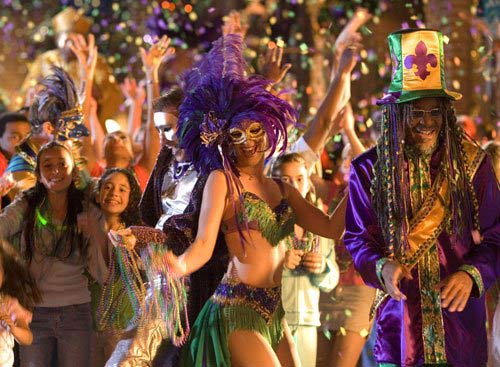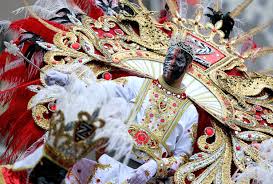THE CARNIVAL
Mardi Gras Celebrations
Kiss pleasures of the flesh goodbye at the planet’s most exuberant carnivals.

The crowd celebrates during the Mardi Gras parade in Cologne, Germany.
Stereotypically serious Germans throw a communal silly fit during
Karneval, also known as Fasching in some parts of Germany. Festivities
begin November 11 and flow all the way through winter. In Cologne, the
hundreds of festive events include parades, balls, concerts, and
traditional variety shows. On the Monday before Ash Wednesday, a rowdy
pageant of fools is followed by an all-night ball

New Orleans, Louisiana, Napoleon may have sold Louisiana to the Americans, but French traditions
endured, most notably Mardi Gras (Fat, or Shrove, Tuesday), the raucous
carnival that really defines New Orleans. Beginning with a masked ball
on the Feast of the Epiphany on January 6, celebrations build to fever
pitch during five days of pre-Lenten parties.

Veracruz, Mexico
Eight days before Lent, Carnival kicks off in this eastern port city with the quema del mal humor—the
“burning of ill humor” in the form of an effigy of Satan or (more
likely) an unpopular political figure. Days of joyous parades and Latin
revelry include the crowning of children as the Carnival Queen and the
King of Joy and culminate in a mock burial for Carnival Juan, the symbol
of the festivities.

Port of Spain, Trinidad and Tobago
With headdresses, hot pants, and painted bodies
swinging to infectious soca, Port of Spain hosts one of the largest and
most elaborate Caribbean carnivals. Brace yourself for all-night parties
and raucous steel-pan music. Two days before Ash Wednesday, paint, oil,
and melted chocolate fly during the mas (masquerade) parades.

Olinda, Brazil
Unlike its flashy Rio cousin, this historic coastal town celebrates Carnival with small bands playing frevo
(from the Portuguese word for “boiling”) and giant papier-mâché puppets
lurching through the cobbled quarter. Every street boasts its own bloco,
or Carnival band, driving throngs of gyrating dancers in audacious
costumes. The wildest getups are worn by transvestite groups on Carnival
Friday.

Venice, Italy
The mother of all Mardis Gras celebrations, the flamboyant Venetian
Carnevale was invented in the 13th century, marrying the Latin carne (flesh) to vale
(farewell). Although rooted in Catholicism, this has always been a
secular extravaganza and an excuse for Venetians to act out their
fantasies behind the anonymity of disguise. Visit about two weeks before
Lent to see locals in authentic costume.

Patras, Greece
A meeting of myth and reality, Patras’s Carnival draws its inspiration
from ancient Greece—in particular, Dionysus, the god of wine. St.
Anthony’s Day (January 17) marks the official start of a carnival season
that stretches all the way into early March, finishing with a lavish
parade and a kite-flying competition


Goa, India
Unique to India, the Goa Carnival still exudes the free, harmonious
spirit that made this former Portuguese colony a hippie legend. On Fat
Saturday, King Momo reads a decree entitling him to rule for three days
and ordering everyone to party. Gorgeous floats and graceful dancers
wend their way through the streets of Panjim to traditional folk songs
and strumming of guitars.





No comments:
Post a Comment